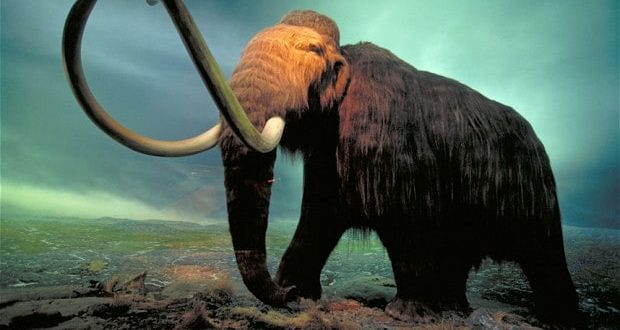The woolly mammoth was not so furry when it died out… growing a weird, semi transparent satin coat.
New study suggests the mammoth also had a poor sense of smell – and sex life – just before being wiped out after suffering a “genomic meltdown”.
Writing in the journal PLOS Genetics, bioinformatics and genomics professor Rebekah Rogers, formerly of the University of California, Berkeley and now at the University of North Carolina, and her colleagues explained that they sequenced the genomes of two mammoths: a 45,000-year-old one from mainland Siberia and a 4,300-year-old specimen from Wrangel Island.
Although mainland mammoths in Siberia and North America died off due to climate change and overhunting roughly 10,000 years ago, Scientific American noted that the creatures were able to hang on elsewhere for another 6,000 years – including Wrangel Island, which has been called the last refuge for the dying breed.
Rogers and her colleagues discovered that the members of these smaller, surviving populations had experienced a “genetic meltdown” of sorts before their extinction, meaning that they found a number of harmful mutations in their genomes. Among those defects was a mutation which gave their typically shaggy fur a strange, satin-like glow, one which hampered their sense of smell and caused stomach discomfort, and another that would have hurt their chances of mating.
Findings could help shape future conservation efforts
According to the study authors, the creatures mutated so that they lost a number of proteins that were typically found in their urine, and which Discover Magazine explained played a key role in social interaction and mate selection. Research on related species, including the Indian elephant, has found that the lack of these proteins could be a deal-breaker for a potential mate.
The findings support theoretical models that suggest that decreasing animal populations have the potential to experience genomic deterioration, Scientific American explained. Potentially harmful mutations are no longer weeded out due to the lack of genetic variation, rendering the process of natural selection ineffective and reducing the chances of survival for the species.
“This study was very interesting because it let us look at a snapshot of ‘before’ and ‘after’ a change in population size within a single species,” Rogers told the publication. “In the Wrangel Island mammoth, we see a massive excess of what appear to be bad mutations. It’s difficult to catch a population in the process of going extinct, but this study finally made it possible, thanks to advances in DNA sequencing.”
While Rogers said that her team was unable to definitively determine that these mutations were directly responsible for the eventual extinction of the Wangel Island mammoths, she emphasized that they certainly were no help to the creatures as they struggled to adapt to a changing habitat. In addition, Discover noted that the study will help scientists better understand how a species can deteriorate genetically as their population numbers decline, which could help conservationists as they work to prevent future extinctions.
Agencies/Canadajournal
 Canada Journal – News of the World Articles and videos to bring you the biggest Canadian news stories from across the country every day
Canada Journal – News of the World Articles and videos to bring you the biggest Canadian news stories from across the country every day



